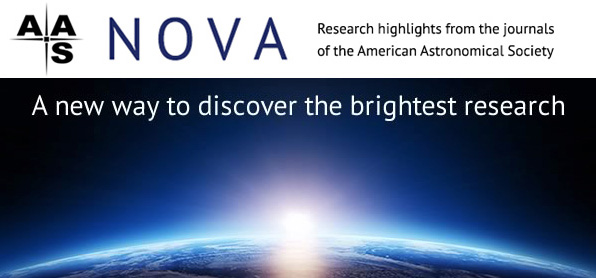Highlights from AAS Nova: 5-18 February 2017

Susanna Kohler American Astronomical Society (AAS)
AAS Nova provides brief highlights of recently published articles from the AAS journals, i.e., The Astronomical Journal (AJ) and The Astrophysical Journal (ApJ), ApJ Letters, and ApJ Supplements. The website's intent is to gain broader exposure for AAS authors and to provide astronomy researchers and enthusiasts with summaries of recent, interesting research across a wide range of astronomical fields.
The following are the AAS Nova highlights from the past two weeks; follow the links to read more, or visit the AAS Nova webpage for more posts.
17 February 2017
Revisiting Black Holes as Dark Matter
Could dark matter be made of intermediate-mass black holes formed in the beginning of the universe? A recent study takes a renewed look at this question.
15 February 2017
Fixing the Big Bang Theory’s Lithium Problem
Scientists may have solved a decades-old puzzle about the formation of our universe.
14 February 2017
Don’t Blame Asteroids for the Late Heavy Bombardment!
Astrobites reports on the large impactors that pelted the Moon until 3.8 billion years ago, creating huge craters that have survived to this day.
13 February 2017
New Ultra-Compact Dwarf Galaxies in Clusters
A new study reveals a set of extremely compact and dense galaxies in distant galaxy clusters.
10 February 2017
Simulations of Solar Jets
How do jets emitted from the Sun’s surface contribute to its corona and to the solar wind?
8 February 2017
Climate of an Earth-Like World with Changing Eccentricity
Having a giant planet like Jupiter next door can really wreak havoc on your orbit! What might such a bad neighbor mean for the long-term climate of an Earth-like planet?
7 February 2017
Anisotropies in Our Galaxy
Astrobites reports on cosmic rays observed at Earth with the Tibet Air Shower experiment.
6 February 2017
Featured Image: A Search for Stellar Bow Shock Nebulae
More than 700 candidate stellar bow shock nebulae — signs of runaway stars — have been discovered in the Milky Way.


